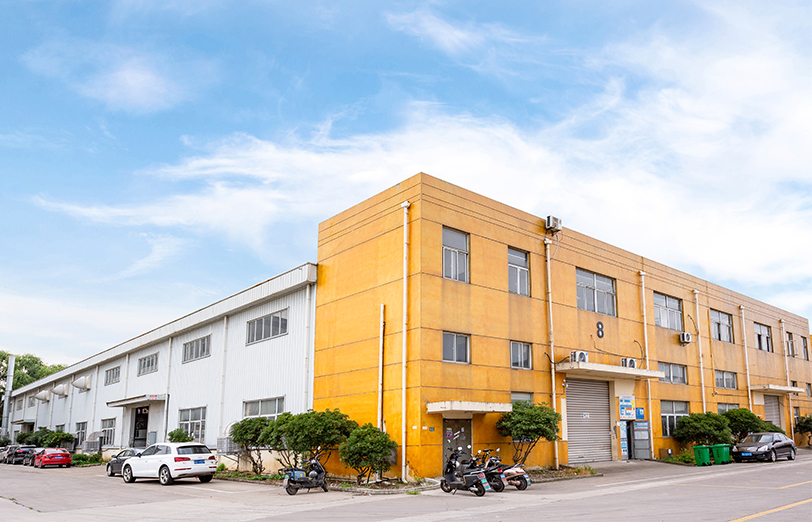
A plastic profile extrusion machine is a sophisticated piece of industrial equipment used extensively in the production of profiles made fro...
READ MOREThe wall panel extrusion line is a critical piece of equipment in modern construction and manufacturing industries, designed for the continu...
READ MOREThe ceiling panel extrusion line is an essential piece of equipment in the production of ceiling panels, offering consistent quality and eff...
READ MOREThe edge banding strip extrusion line plays a critical role in producing high-quality edge banding strips used in furniture, cabinetry, and ...
READ MOREIn the plate/sheet extrusion production process, controlling the thickness and width is a key link to ensure product quality and meet customer needs. Here are some commonly used methods and techniques:
1. Accurate mold design
Mold specifications: The design and manufacture of the mold directly affect the thickness and width of the plate. Accurate mold size and surface treatment can ensure the consistency of the extruded product.
Adjusting the mold gap: By adjusting the gap of the mold, the thickness of the extruded material can be controlled. Reasonable gap setting can ensure uniform flow of materials and reduce thickness fluctuations.
2. Temperature and pressure control
Heating temperature: By accurately controlling the temperature of the barrel and mold, the fluidity and molding effect of the material can be affected, thereby controlling the thickness.
Extrusion pressure: Adjusting the pressure of the extruder helps to improve the flow characteristics of the material, ensure uniform molding and control the thickness.
3. Speed regulation
Extrusion speed: The speed of the extruder has a direct impact on the thickness of the product. According to the material characteristics and production needs, adjust the extrusion speed to obtain the desired thickness and width.
Cooling rate: After molding, the cooling rate also affects the dimensional stability of the sheet. Proper cooling can reduce deformation and thickness variation.
4. Online monitoring and feedback system
Thickness gauge: Use online measuring equipment to monitor product thickness in real time, compare it with the set value, and adjust production parameters in time.
Automated control system: Use automated control system to automatically adjust extrusion parameters based on real-time data feedback to maintain product consistency.
5. Regular maintenance and calibration
Equipment maintenance: Regularly check and maintain extruders and related equipment to ensure their normal operation and avoid dimensional fluctuations caused by equipment failure.
Calibrating molds and measuring equipment: Regularly calibrate molds and measuring equipment to ensure their accuracy to maintain product quality.
6. Raw material characteristics
Selecting suitable raw materials: Different raw materials have different fluidity and cooling characteristics. Selecting suitable materials can improve the stability of the molding process and the final product.
Material pretreatment: Pretreatment of raw materials (such as drying, heating) can improve their fluidity, which helps control the thickness and width of the final product.
The main application areas of board/sheet extrusion lines are very wide and cover multiple industries. Here are some of the main application areas:
1. Construction and building materials
Wall panels and roof panels: waterproof, thermal insulation and decorative materials for building exterior walls, interior walls and roofs.
Partition walls and interior decorative panels: used for interior decoration of commercial and residential buildings, providing good sound insulation and thermal insulation.
2. Furniture manufacturing
Furniture panels: used to make furniture such as tables, chairs, cabinets, etc., providing durable and beautiful surfaces.
Decorative materials: used for surface treatment and decorative panels of furniture to enhance visual effects.
3. Packaging industry
Packaging films and sheets: packaging materials for food, electronic products, etc., providing protection and isolation.
Transport pallets and containers: sheets used for cargo transportation, providing strong and lightweight solutions.
4. Automotive industry
Interior and exterior trims: used for interior and exterior components of automobiles, such as dashboards, door panels and body shells.
Sound insulation materials: used for automobile sound insulation and thermal insulation to improve riding comfort.
5. Electronics and electrical appliances
Electronic product housing: housing materials used for electronic devices such as televisions and computers, providing protection and beauty.
Insulation materials: insulation layers used for electrical equipment to ensure safety and performance.
6. Medical industry
Medical device housing: housings used for medical equipment and instruments to ensure durability and easy cleaning.
Disposable medical supplies: such as medical packaging, infusion bags, etc., to ensure safety and hygiene.
7. Agriculture
Greenhouse covering materials: covering panels used for greenhouses, providing good light transmittance and heat preservation.
Water pipes and irrigation systems: pipe materials used for agricultural irrigation, providing corrosion-resistant and durable solutions.
8. Toys and sports equipment
Toy manufacturing: used to manufacture children's toys and sports equipment, ensuring safety and durability.
Fitness equipment: such as yoga mats, sports boards, etc., providing comfortable and non-slip surfaces.
9. Daily consumer goods
Household items: such as storage boxes, kitchen utensils and bathroom products, providing practicality and beauty.
Disposable items: such as tableware, cups, etc., to meet the needs of daily life.
